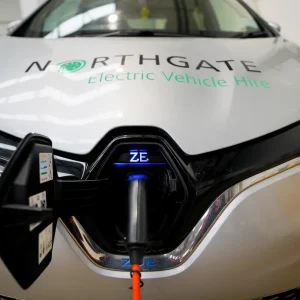HMRC’s lower advisory fuel rates prompted howls of protest on the BusinessCar website, yet there is a way we could all benefit financially, writes Rupert Saunders
The announcement of new, lower advisory fuel rates for company car drivers provoked a predictable howl of criticism on the BusinessCar website.
Leaving aside the unprintable and the illogical, these responses split into two camps. One, why should I be out of pocket on my company fuel? Two, we should be trying to save fuel and these new rates are a good way to achieve that.
I wonder how many business car drivers (or managers for that matter) actually sat down to do the maths. It doesn’t take long and actually shows that HMRC has got the rates about right.
For a start, using the AA’s figures, average fuel prices – having peaked in July 2006 at around 97p per litre for petrol and diesel – are now back down to similar levels as mid-2005 (roughly 88p). Back then HMRC was allowing 12p a mile for a typical 2.0-litre petrol and 9p a mile for a 2.0-litre diesel. Now it is allowing 11p and 9p respectively.
In the meantime, cars have become more economical – or so the car manufacturers would have us believe.
Of course, one of the problems for the revenue is that they have to work to official SMMT fuel consumption figures and, as we all know, cars very rarely achieve their official fuel consumption figures in real life. Naturally enough, car manufacturers tune engines to achieve best fuel consumption (and lowest CO2 output) under test bench conditions and over a theoretical EC-approved driving cycle.
|
“The howls of protest from unthinking business car drivers, and their lobbyists, does not help our cause or paint the industry in a very favourable light.” |
|
Rupert Saunders |
Whose fault is it?
So, let’s not blame HMRC here. Take a look at the calculation in the tables based on official fuel consumption and my assumption of what a typical business car driver might achieve in real life. On the test bench the driver would actually be a few quid in over a typical year’s motoring; in real life he is likely to be a few quid out of pocket.
So, who are the real culprits? The car manufacturers? I think not. After all, they are saving us all extra road fund charges and BIK tax by appearing to keeping CO2 emissions under control. You can’t blame them if the official fuel consumption figures are over optimistic.
But what about the drivers? Let’s assume for the moment you could persuade your drivers to be a little less leaden-footed and get their fuel consumption closer to the official figure. Then they could actually be making money out of their business mileage.
The clear message to drivers should be: drive sensibly and there is no reason why you should be out of pocket with these fuel rates, while responsible business car mangers can use these rates to save fuel and reduce their costs.
It’s a bit of a radical thought, I know, but once again I think HMRC has been quite clever here. Meanwhile, the howls of protest from unthinking business car drivers, and their lobbyists, does not help our cause or paint the industry in a very favourable light.





